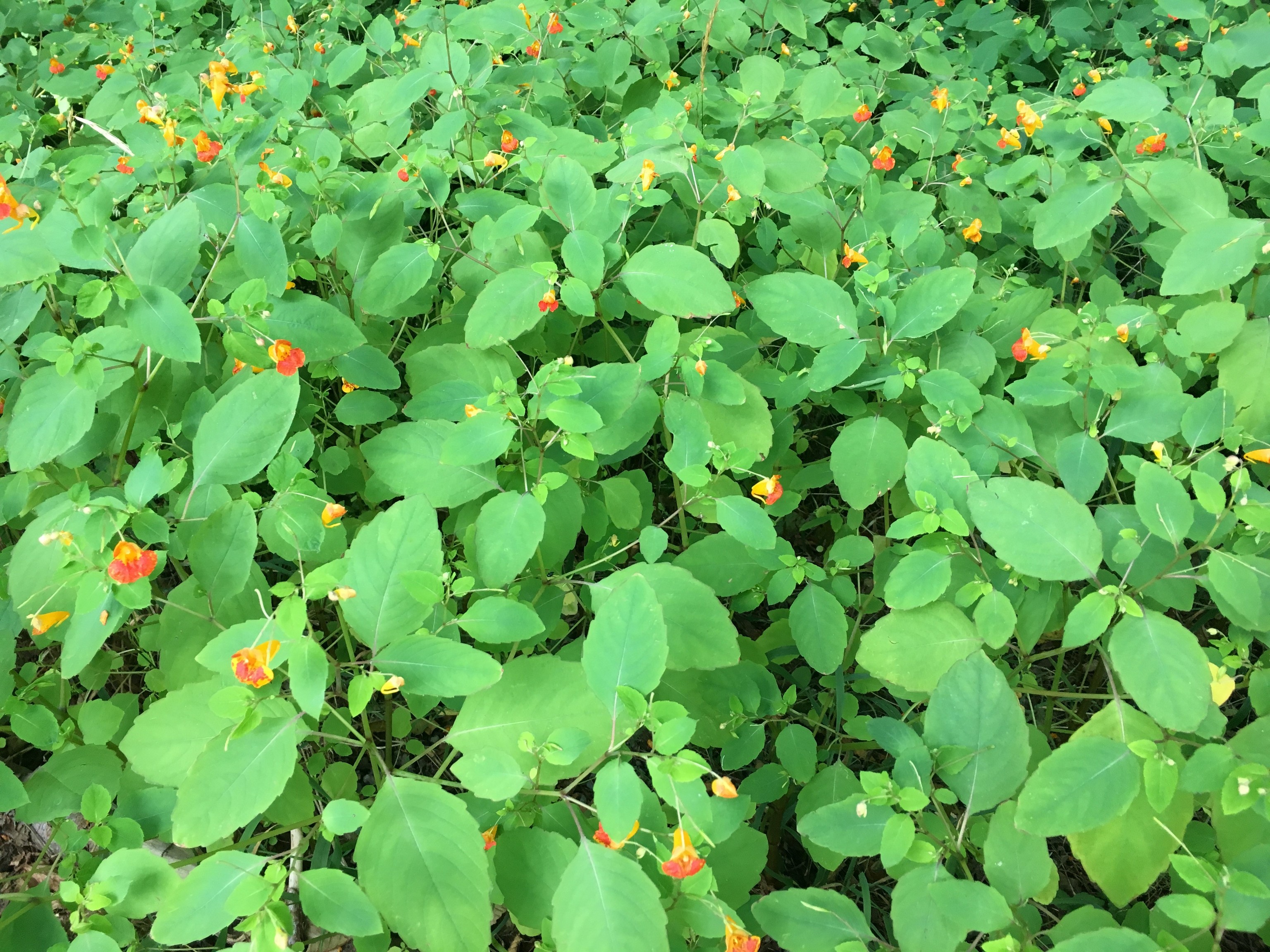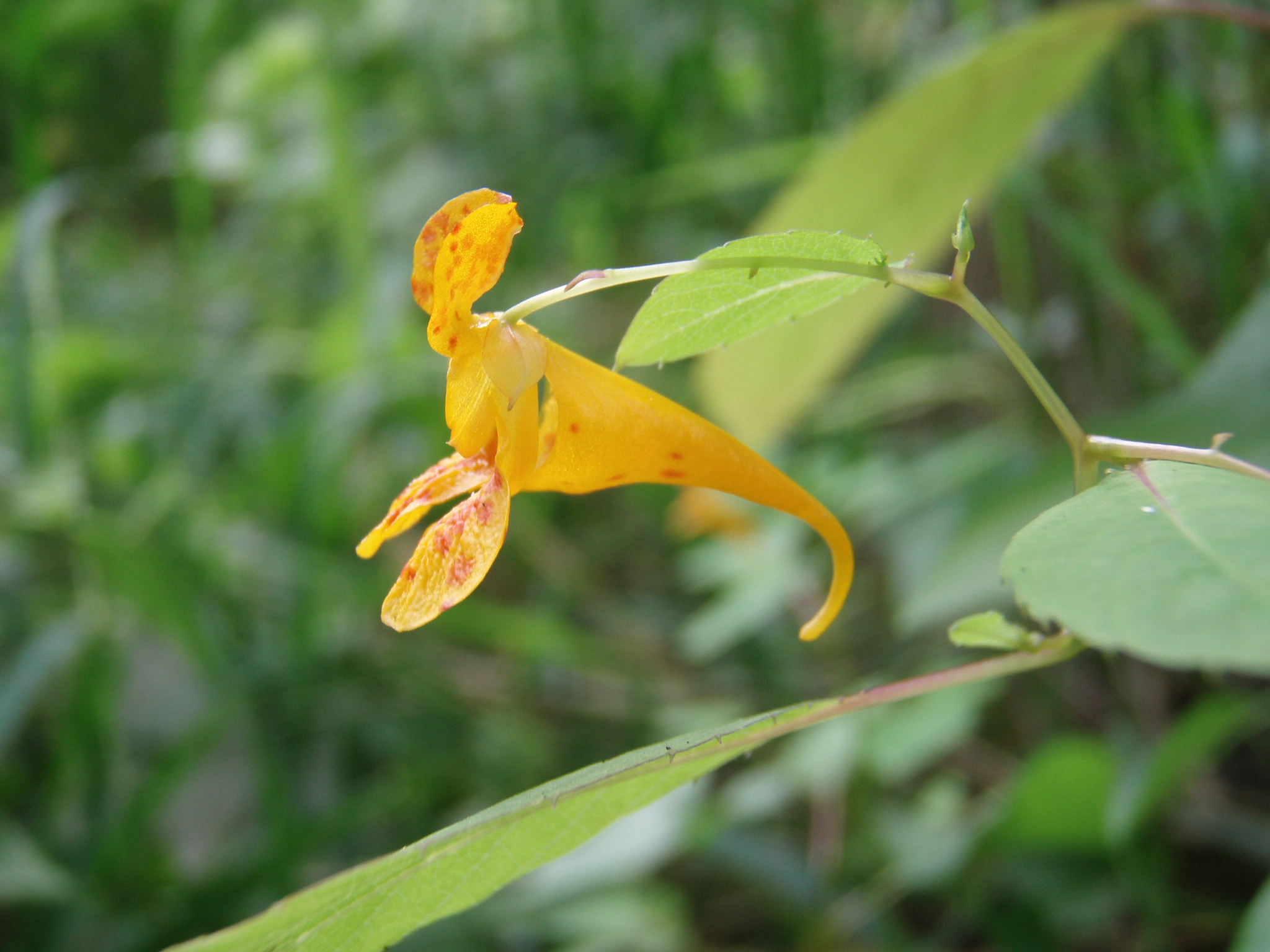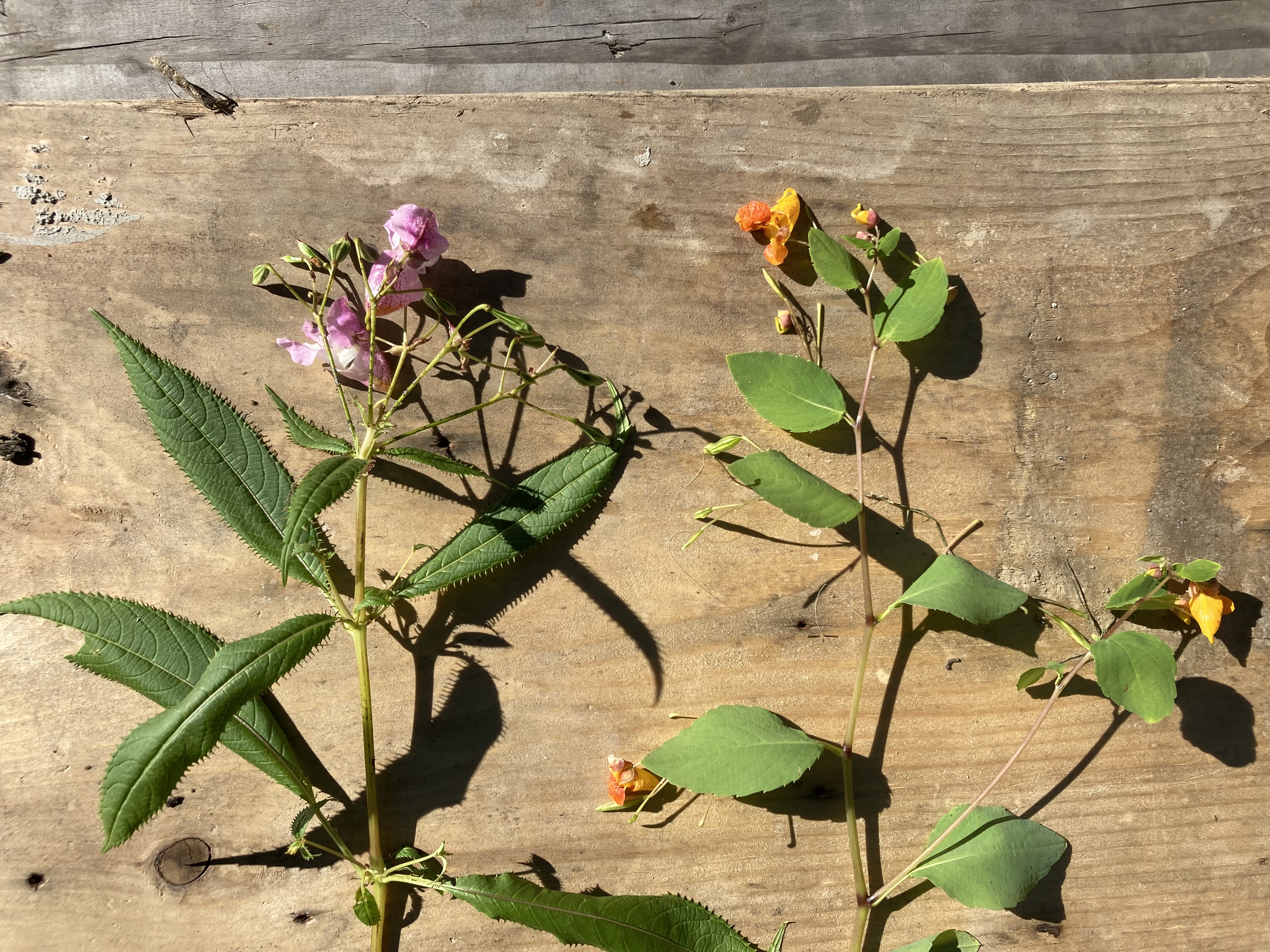Spotted jewelweed identification and control
Information about the noxious weed spotted jewelweed. Spotted jewelweed is also known by its Latin name, Impatiens capensis.
About this weed
Spotted jewelweed is a non-regulated Class C noxious weed. This means due to how widespread it is, property owners are not required to control this species on their property, though it is encouraged.
Spotted jewelweed is known as Impatiens capensis and it is in the touch-me-not family.

Why it's a problem
Spotted jewelweed spreads rapidly and can outcompete native plants for space and resources. Seedlings of this plant can create dense clumps shading out other plants that would otherwise grow in that space. It can hybridize with native spurless jewelweed (I. ecornuta) to produce I. x pacifica making identification difficult. It is widespread in King County and is commonly found growing in forests, riparian areas (habitat along rivers and streams), and wet roadside ditches.
Plant description
Spotted jewelweed grows primarily west of the Cascades in Washington and can be found growing out of control in certain lowland areas of the state. It is documented by herbarium records in most counties in Western Washington with the exceptions of Island, Kitsap, San Juan, and Clallam counties. It is widespread in King County and is commonly found growing in forests, near and along rivers, and wet roadside ditches. It is native to the eastern part of North America.
Spotted jewelweed is an annual plant, meaning the plant’s entire lifecycle from birth to death takes place in 1 year. It is smooth and hairless, typically growing to around 2-5 feet in height.
Flowers are orange and (usually) spotted, around 1 inch long with recurved spurs.
Leaves are oval-shaped and alternately arranged (meaning leaves do not grow directly across from each other but instead alternate down the stem). Leaves are a dull blue-green color with toothed margins.
Stems are weak, hollow, and succulent (watery, easily crushed), and can be reddish in color.
Seed capsules are green, swollen, and long. They form only once flowers are pollinated. When mature, disturbed pods can eject seeds 4-6 feet out, hence their family name touch-me-not.
Spotted jewelweed has shallow root systems, with reddish knob like nodes forming towards the bottom of the stem.
Hybridized plants have either no spots or no spurs and are mixed in with I. capensis and I. ecornuta. Hybridized flower colors range from cream to orange as well as a rare spotless variety. Plants bloom from mid to late summer and have two types of flowers: open flowers and smaller/closed, self-fertilizing flowers. Both flowers produce seeds, which can float in water for 200 or more days. These seeds can survive for up to 3 years.





Be aware of look-alike plants
Spotted jewelweed can look similar to these species that lack the spur that is present on spotted jewelweed.
Young spotted jewelweed can look similar to these regulated weeds in King County.
When in doubt, take photos and report them on iNaturalist.
What to do if you find it
Property owners in King County are not required to control spotted jewelweed. While we are not generally tracking infestations, we can provide advice on how to control spotted jewelweed.
The King County Noxious Weed Control Board encourages property owners to remove spotted jewelweed where possible, and to avoid introducing it to new places.
Control methods
We recommend using a combination of methods to control noxious weeds. In areas with few weeds, it is important to act quickly before they become harder to control. Make a long-term plan as it often takes several years to get rid of most weeds. Start in the least infested areas first and then move into more heavily infested areas.
Manual control
Jewelweed can be pulled or dug up relatively easily from moist soils, making sure to remove all of the roots.
Note: If the plant already has seed pods, you can try to carefully bag the seed heads, but seeds react to touch and can eject 5 or more feet from the plant. It is typically best to leave these plants and come back for control the following year before flowers form.
Mechanical control
Mowing or cutting back spotted jewelweed can be used to reduce disturbance and erosion, cutting plants as close to the ground as possible. Do not mow if the plants are already in seed as this will further spread the seeds.
Mowed sites will need to be monitored for re-sprouting plants.
Clean tools after control to avoid spreading seeds beyond the site.
Chemical control
Stay safe when using herbicide:
- Always read the label before use.
- Wear a long-sleeved shirt, long pants, shoes, and eye protection.
- Follow state and local regulations.
Herbicide may be useful for large, dense infestations. This will likely require a permit issued by the state Department of Ecology if the site is wet or along the water’s edge. Feel free to contact us for permitting information or information on hiring a licensed aquatic weed contractor.
If you are qualified to do so or if your infestation is not near the water’s edge, follow these general best practices:
- Treatment should take place before the plants flower, but after seedlings have grown large enough to uptake herbicide.
- Retreatment of sites is necessary to control late-germinating plants and skips.
- Monitoring of the site will be necessary for several years after treatment.
- Take care to avoid desirable plants.
Disposal instructions
If no seed capsules present, plants can be left to compost on-site. Check that roots are not left in a place that they could re-root.As extra precaution, if leaving plants on site, crush plants by stomping on them before moving on.
If seeds present, plants should be bagged and disposed of in the trash to prevent further seeding
Noxious Weed Disposal - Washington State Noxious Weed Control Board
Control methods
We recommend using a combination of methods to control noxious weeds. In areas with few weeds, it is important to act quickly before they become harder to control. Make a long-term plan as it often takes several years to get rid of most weeds. Start in the least infested areas first and then move into more heavily infested areas.
Manual control
Jewelweed can be pulled or dug up relatively easily from moist soils, making sure to remove all of the roots. Note: if the plant already has seed pods, you can try to carefully bag the seed heads, but seeds react to touch and can eject 5+ ft from the plant. It is typically best to leave these plants and come back for control the following year before flowers form.
Mechanical control
Mowing or cutting back spotted jewelweed can be used to reduce disturbance and erosion, cutting plants as close to the ground as possible. Do not mow if the plants are already in seed as this will further spread the seeds. Mowed sites will need to be monitored for re-sprouting plants. Clean tools after control to avoid spreading seeds beyond the site.
Chemical control
Stay safe when using herbicide:
- Always read the label before use.
- Wear a long-sleeved shirt, long pants, shoes, and eye protection.
- Follow state and local regulations.
Herbicide may be useful for large, dense infestations. This will likely require a permit issued by the state Department of Ecology if the site is wet or along the water’s edge. Feel free to contact us for permitting information or information on hiring a licensed aquatic weed contractor.
If you are qualified to do so or if your infestation is not near the water’s edge, follow these general best practices:
Treatment should take place before the plants flower, but after seedlings have grown large enough to uptake herbicide.
Retreatment of sites is necessary to control late-germinating plants and skips.
Monitoring of the site will be necessary for several years after treatment.
Take care to avoid desirable plants.
Use aquatic-approved products in situations where water is present.
Disposal instructions
If no seed capsules present, plants can be left to compost on-site, check that roots are not left in a place that they could re-root.
As extra precaution, if leaving plants on site, crush plants by stomping on them before moving on.
If seeds present, plants should be bagged and disposed of in the trash to prevent further seeding
Noxious Weed Disposal - Washington State Noxious Weed Control Board

 Translate
Translate